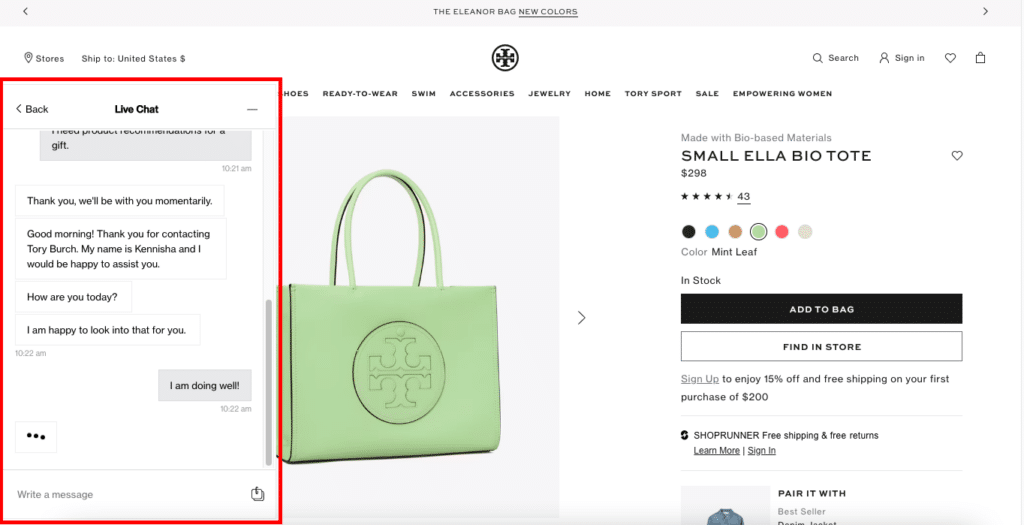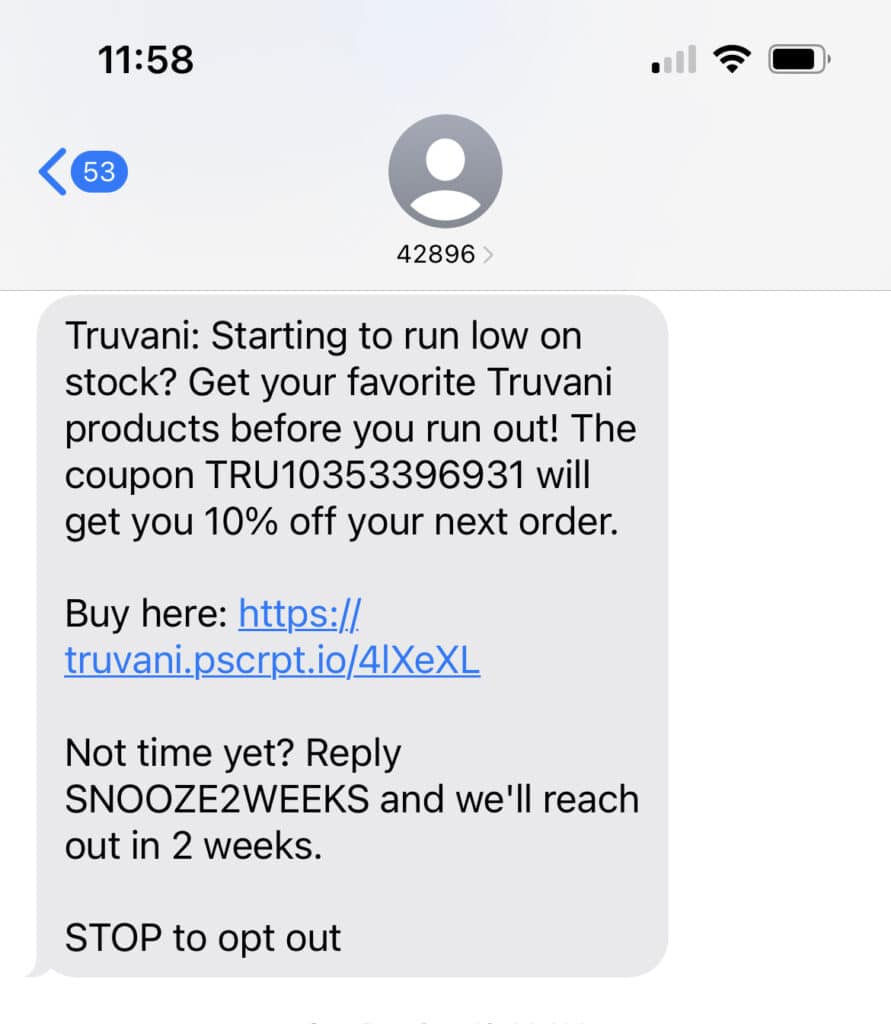How Conversational Commerce Empowers Brands to Drive Customer Acquisition and Retention

We’re just going to come out and say it: it’s not an easy time to be a consumer-facing brand.
For one, there’s a ton of competition in just about any product or service category. Of course, there are the legacy brands you must contend with. But then there are also the digital-native brands that seem to pop up overnight – threatening to take market share.
The current economic climate also presents big challenges to brands.
According to McKinsey & Company, 74% of consumers are changing their shopping behavior – often by adjusting the quantity or size of essential items, delaying non-essential purchases, and switching to less expensive brands. And they’re thinking long and hard about the purchases they do make. According to research from PowerReviews, about 75% of consumers say they’re doing more pre-purchase research than before due to the current economic climate.
Despite these challenges, revenue growth is still possible. But it requires brands to rethink their approach to winning and retaining customers.
In this blog, we’ll explore how winning sales organizations are tapping into conversational commerce to drive revenue growth now – and in the future.
Conversational Commerce Facilitates Informed Purchase Decisions – and Boosts Satisfaction

When shopping in-store, consumers can interact with a product expert (aka the sales associate) to ask questions and get personalized product recommendations. These experiences lead to better purchase decisions – and higher levels of satisfaction.
Conversational commerce empowers brands to deliver similar experiences to online shoppers.
In some cases, brands can tap into artificial intelligence to deliver advice and recommendations. For example, paint manufacturer Benjamin Moore developed Betty, a “virtual color assistant.” Betty provides recommendations to online shoppers based on their answers to a series of questions.
In some cases, the conversational experience is delivered by a live human.
Consider a consumer browsing online for a high-end handbag. She typically shops in-store for such items; she loves the personal service she receives there. But this time, she doesn’t have time to visit a store. She’s narrowed down her options, but she can’t decide which style best fits her needs. She notices she can start a chat with an in-store associate, so she does. The store associate is able to quickly answer her questions. The associate also pulls up her purchase history to get a better idea of what’s worked for her in the past. Based on this information, the Associate recommends a handbag, as well as a matching wallet. The customer orders both items. When the items arrive, she finds they suit her needs and her style perfectly.

In both examples, the brand delivered a personalized experience that empowered the customer to make an informed purchase decision.
When customers have the opportunity to ask questions and get expert advice, they’re better able to identify the product or service that best meets their needs. They’ll know exactly what to expect – and they’ll be satisfied with their purchase decision.
These satisfied customers will be significantly less likely to make a return. After all, many of the top reasons consumers return merchandise boil down to the item not meeting their expectations.
In addition, these happy customers are more likely to become loyal customers who are willing to share their great experiences with others. This will boost the customer’s lifetime value – and help you attract new customers, too.
Conversational Commerce Reduces Cart Abandonment
Cart abandonment is an extremely common (albeit extremely frustrating) occurrence for all eCommerce brands. According to Baymard, the average cart abandonment rate is 69.99%. Yikes.
Unfortunately, there’s no way to completely eliminate cart abandonment. But embracing conversational commerce can empower brands to dramatically reduce it.
The same Baymard research cited earlier found that about 59% of those who have abandoned a cart because they just weren’t ready to buy. Essentially, they were window shopping. According to Baymard, these abandonments are “largely unavailable.”
However, there are other reasons for cart abandonment that are avoidable.
In many cases, a consumer adds an item (or items) to their cart but doesn’t follow through with the purchase because they don’t feel confident in their purchase decision. Maybe they still have unanswered questions about the product, shipping, returns, or some other topic – and they’re not able to find answers. Forrester research tells us over half of US online adults will abandon an online purchase if they can’t find a quick answer to their question.
Conversational commerce allows brands to address these purchase blockers – and decrease cart abandonment.
Consider a consumer purchasing furniture for her new home. She has several pieces in her shopping basket, but she’s hesitant to make the purchase. She wants to be sure the items will fit in her space and will deliver on time. She also wants to have a clear understanding of what action she can take if one of the items doesn’t work out.
After a while, a chat bubble appears on the screen, asking if she needs help or has any questions. She has a conversation with the sales associate, who is able to answer all of her questions. She confidently purchases all of the items in her cart.
In other cases, it can be the checkout process itself that’s a barrier. Of course, best practice is to streamline the checkout process as much as possible to reduce friction. However, brands can also leverage conversational commerce to support shoppers move through the checkout process. Through conversational commerce, brands can guide shoppers through the checkout steps and make changes to orders.
While helping the customer through checkout, there may also be opportunities for upsells and cross sells.
Sometimes, it takes a little budget to remind a shopper to return to their cart.
If a shopper has opted in, the brand can send them a message inviting them to ask questions – and encouraging them to follow through with the purchase.



Conversational Commerce Drives Repeat Purchases
For brands, customer retention is just as important as acquisition. Customers who stick around long-term deliver greater lifetime value – and a bigger boost to the bottom line.
Yet, consumers aren’t as loyal as we’d like to believe. Research from Salesforce tells us 71% of consumers have switched brands at least once in the last year.

Brands must make it a focus to boost loyalty. Conversational commerce can play a key role in this important effort.
Of course, delivering great products and services is an important way to retain customers. But so too is delivering great experiences. Per Salesforce, 88% of consumers feel the experience a company provides is as important as its products or services.
Providing great experiences via conversational commerce is a great way to build and strengthen relationships with your customers. When customers feel connected to your brand, they’re likely to return for future purchases.
Of course, a customer can reach out to your brand via conversational commerce any time they have a need. By consistently delivering great experiences through these channels, you’ll boost satisfaction and loyalty.
But brands can also proactively use conversational commerce to increase loyalty.
For example, a brand can send an invitation to a recently acquired customer asking them to join their loyalty program. If the customer joins, they’re more likely to make future purchases. According to Salesforce, 56% of consumers are more likely to buy from a brand with a loyalty program.
Brands can also leverage conversational commerce in other ways to drive repeat purchases. For example, a brand can send personalized offers to a customer, based on their past purchases and interactions with the brand. Or, the brand can send reminders via conversational commerce when it’s time to restock or refill an item.
Start Acquiring and Retaining More Customers with Conversational Commerce
Conversations have always been a powerful tool for sellers. Today, a growing number of consumers prefer to take these conversations online.
It’s time to incorporate conversational commerce into your sales strategy. Delivering great experiences via conversational commerce is key to increasing customer satisfaction, sales, and loyalty.
Want to see how Messaging Studio from 1440 empowers brands to deliver and manage winning conversational experiences across top channels – all without leaving Salesforce? Reach out to schedule a live demo today.